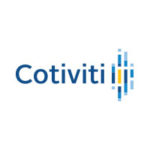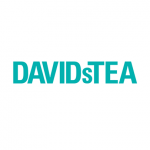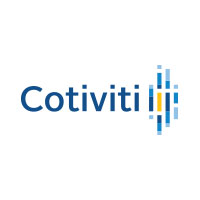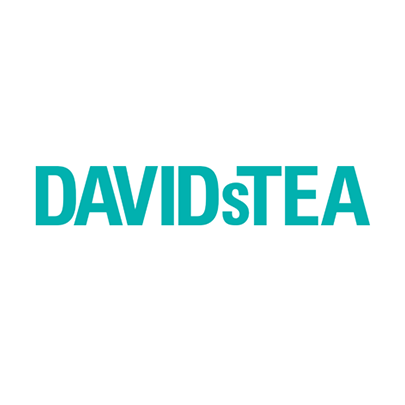Category: independent stock research on IPOs
Cotiviti Holdings: Striving for Payment Accuracy
 Cotiviti Holdings (NYSE: COTV), based in Atlanta, Georgia, is a recent addition to our Battle Road IPO Review Business Services sector coverage. The company provides payment accuracy solutions in the form of analytics and services to the healthcare and retail industries. For 2016, Consensus estimates call for revenue of $614 million, followed by a 10 percent increase in 2017 to $676 million. EPS is expected to be $1.30 this year, followed by $1.36 in 2017, an increase of just five percent.
Cotiviti Holdings (NYSE: COTV), based in Atlanta, Georgia, is a recent addition to our Battle Road IPO Review Business Services sector coverage. The company provides payment accuracy solutions in the form of analytics and services to the healthcare and retail industries. For 2016, Consensus estimates call for revenue of $614 million, followed by a 10 percent increase in 2017 to $676 million. EPS is expected to be $1.30 this year, followed by $1.36 in 2017, an increase of just five percent.
Cotiviti is the result of the May 2014 merger between Connolly Superholdings, a provider of post-payment accuracy solutions for the healthcare and retail sectors, and iHealth Technologies, a provider of pre-payment accuracy solutions for the healthcare sector. The leveraged merger was managed by Advent International, which now owns roughly 65 percent of the outstanding shares.
COTV priced its 12.5 million share IPO at $19 per share on the NYSE on May 25, 2016. All proceeds from the IPO went to the company, thus raising roughly $225 million, net of underwriter and other fees. The IPO was led by Goldman Sachs, J.P. Morgan, Barclays, Citigroup, Credit Suisse, Morgan Stanley, RBC Capital Markets, SunTrust Robinson Humphrey, R.W. Baird, and William Blair. At a recent share price of $33, COTV’s market cap is roughly $3 billion.
Cotiviti’s solutions help healthcare providers identify claim discrepancies throughout the claims process, from pre to post payment. Also referred to as recovery auditing, solutions from Cotiviti help government agencies and companies recover erroneous payments made to suppliers and customers. The US healthcare sector accounts for roughly 85 percent of the company’s revenue, and eight of the top 10 US healthcare providers are customers in some shape or form. Over 40 healthcare organizations utilize the company’s services, including Medicare and Medicaid. The remaining 10-15 percent of sales is derived primarily from the retail sector. Cotiviti counts eight of the top ten US retailers as customers. Cotiviti claims that commercial healthcare clients realized over $2.5 billion in savings utilizing its solutions in 2015, up from $2 billion in 2014.
Cotiviti has indicated that its ten largest healthcare customers on average have been customers of the company for ten years. That said, the company has significant customer concentration, as its top three customers accounted for 32 percent of sales in 2015, and its top ten customers comprised 59 percent of sales in 2015. Prior to its IPO Cotiviti had a net debt position of nearly $1 billion. Thus, it is not surprising that the company recently used proceeds from its IPO as well as cash from operations to pay down $238 million of its second lien credit facility. To learn more about where COTV trades in relation to its Business Services peers within our Battle Road IPO Review, please contact Battle Road Research.
DAVIDsTEA (NASDAQ: DTEA)
 DAVIDsTEA (NASDAQ: DTEA), a Canadian tea and tea merchandise retailer, was founded by David and Herschel Segal in 2008 in Montreal, Quebec, Canada, where it is headquartered today. The company’s President, CEO and Director is Sylvain Toutant, and its CFO is Luis Borgen. The consensus EPS estimate for 2015 is $0.37, up considerably from a nearly $6.00 per share loss in 2014. The Consensus revenue estimate for 2015 is $174 million, up 47 percent from $118 million in 2014.
DAVIDsTEA (NASDAQ: DTEA), a Canadian tea and tea merchandise retailer, was founded by David and Herschel Segal in 2008 in Montreal, Quebec, Canada, where it is headquartered today. The company’s President, CEO and Director is Sylvain Toutant, and its CFO is Luis Borgen. The consensus EPS estimate for 2015 is $0.37, up considerably from a nearly $6.00 per share loss in 2014. The Consensus revenue estimate for 2015 is $174 million, up 47 percent from $118 million in 2014.
DAVIDsTEA debuted on the NASDAQ on June 5, 2015 at a price of $19.00 per share. Three million shares were offered by the company and another 2.1 million shares were offered by selling shareholders for a total of 5.1 million shares offered. DAVIDsTEA shares are currently trading near $11 per share, and its market cap is roughly $270 million. The offering was led by Goldman Sachs, J.P. Morgan, Bank of America/Merrill Lynch, Pierce, Fenner & Smith, with BMO Capital and William Blair & Company acting as co-managers.
The mission of DAVIDsTEA is to make tea fun and accessible. In each of the company’s store locations appears the “Tea Wall,” which displays every flavor of tea at every store, along with gift items, and their teal logo color, aimed to attract younger people. DAVIDsTEA’s goal is for their stores, averaging about 850 square feet in size, to become community fixtures. Curiously, however, not all of their stores include places to sit or congregate. That said, DAVIDsTEA supports local causes and charities, and sponsors local events and sports teams. The company releases new products continuously, resulting in approximately 30 new tea blends introduced per year. In 2015, DAVIDsTEA expects to open 25-30 new Canadian stores, and 10-15 stores in the United States. Long term, DAVIDsTEA plans to open 30-40 new stores each year.
DAVIDsTEA was founded on the premise of peoples’ growing focus on their health and wellbeing by emphasizing the health benefits of tea. DAVIDsTEA has been successful in identifying this as a good business platform, and now has 161 locations. Of these 161 locations, 136 are in Canada, and 25 are in the United States. These stores include very large markets in both Canada and the United States including Montreal, Toronto, Vancouver, Boston, New York, Chicago and San Francisco.
DAVIDsTEA’s fan base includes Oprah Winfrey who has promoted the brand. Using these loyal customers as a springboard, DAVIDsTEA launched a customer loyalty rewards program called “Frequent Steeper”. If a person is a ‘Frequent Steeper”, he or she receives rewards for their purchases in the form of points. Once enough points are earned, “Frequent Steepers” receive free 50 gram, or 2 ounce, packages of tea. DAVIDsTEA also has a very strong social media presence, again with the goal of attracting younger tea drinkers.
Among the many challenges faced by DAVIDsTEA is that of successfully breaking into the US market, which has been a tougher nut to crack for tea retailers, particularly now that Starbucks appears on nearly every corner, and through its ownership of Teavana can tee-up is own lineup of freshly brewed tea. DAVIDsTEA must also compete in the market for in-store personnel, against the likes of Starbucks and other chains. Unclear at this juncture is whether the consumption of tea will become as popular in the US as it is in Canada.
- ‹ Previous
- 1
- 2
- 3
- Next ›


